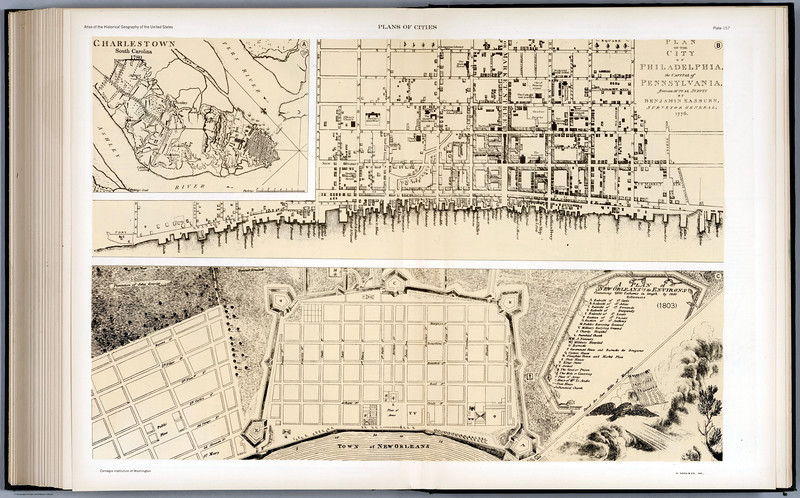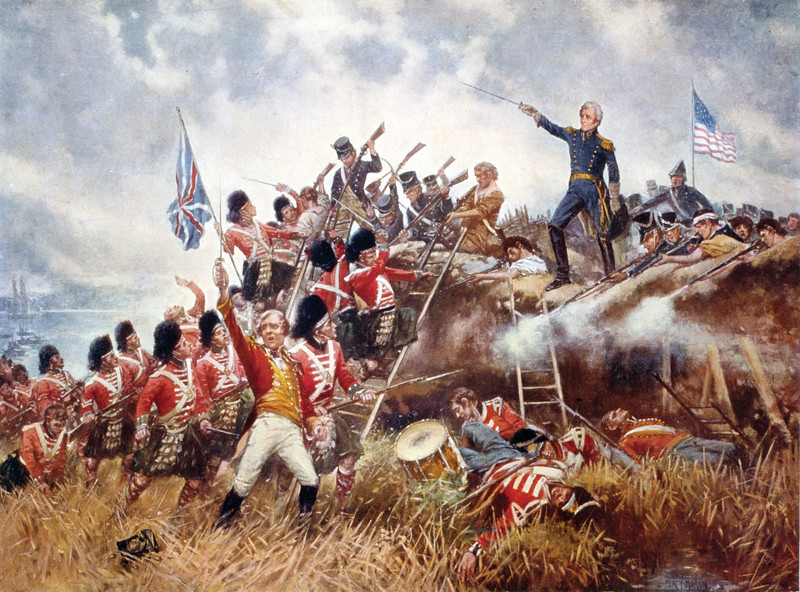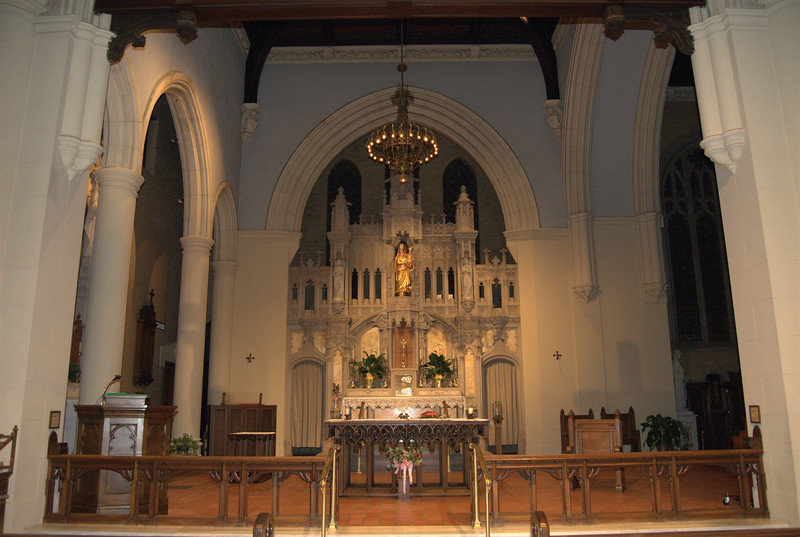
Map of New Orleans. The sweltering heat and the ever-present threat of hurricanes have long made this land, eight feet below sea level, appear inhospitable in the eyes of many. Yet the ways of Divine Providence destined this unique corner of the earth to be the setting for one of the most stunning victories in all of history.
The Battle of New Orleans and Our Lady of Prompt Succor, 1815-2015
The Mother of God Grants a Miraculous Victory
By Ben Broussard
Nestled between dense swampland and the mighty Mississippi River on one side and the vast expanse of Lake Pontchartrain on the other lies the city of New Orleans. Spanish moss gently sways in the breeze from the live oaks lining the bayous, while alligators, brown pelicans, and choruses of bullfrogs make their homes nearby. The sweltering heat and the ever-present threat of hurricanes have long made this land, eight feet below sea level, appear inhospitable in the eyes of many.
Yet the ways of Divine Providence destined this unique corner of the earth to be the setting for one of the most stunning victories in all of history. In 2015, we celebrate the bicentennial of the event which brought about one of the greatest military triumphs at the hands of the Blessed Mother.

The arrival of the Ursulines in New Orleans. These tireless sisters worked to alleviate the needs of the French colonists, both spiritual and temporal.
The Ursulines: Our Lady’s Instruments
The Sisters of Saint Ursula arrived in Louisiana in 1727 to begin the education of young women and girls in New Orleans, only a small outpost at the time. The sisters quickly set themselves to their intended task, their work soon largely included the spiritual needs of the colonists.
Wars between the European powers saw the territory of Louisiana change from French to Spanish hands in 1769. Several Spanish Ursulines had come to help the growing convent, but with another change of government the sisters’ stay was cut short, sixteen of them departing for Cuba. The seven remaining French Ursulines in New Orleans quickly became overwhelmed, doing their best to maintain their boarding school, a day school, an orphanage and a regular course of instruction for Negro slaves.
Meanwhile, in their mother country, the French Revolution brought with it the shuttering of all the religious orders in France. Sister Saint Michel of the Ursulines of Pont Saint-Esprit in the south of France was forced to quit her convent and return home. The dawn of the nineteenth century brought some relief to the French plight, and Sister Saint Michel quickly set about her apostolic tasks, establishing a boarding school for girls in the city of Montpellier. The new apostolate was progressing well, to the delight of the bishop of Montpellier, who had in sight the full restoration of the Ursulines within his diocese. However, as the bishop would soon learn, man proposes but God disposes.
Sister Saint Michel received a letter from her cousin, an Ursuline in New Orleans, begging for help with the immense apostolic labors in Louisiana. Moved by the letter, Sister Saint Michel petitioned her bishop to allow her to go to the aid of her fellow Ursulines in the New World. The bishop denied the request, insisting the sisters’ work in education was necessary for his diocese ravaged by the reign of Terror. The lowly sister had only one hope of recourse: The Holy Father.
In 1807, sending a letter to the Vatican and receiving a reply would take at least four months. To make matters worse Pope Pius VII was a prisoner of the Vatican, kept under house arrest by Napoleon and his soldiers. Given the circumstances of the time, Sister Saint Michel kept the letter for months, finding no opportunity to send her petition.
An Appeal to a Higher Authority

A replica of the original statue of Our Lady of Prompt Succor brought from France, affectionately called “The Little Sweetheart.”
With nowhere else to turn, Sister Saint Michel confided in the Queen of Heaven. Locating a statue that had been discarded in her convent’s attic, she fell on her knees before the Mother of God, and made the following vow: “O Most Holy Virgin Mary, if you obtain for me a prompt and favorable answer to this letter, I make the promise to have you honored at New Orleans under the title of Our Lady of Prompt Succor.”
In just two days she was able to send the letter after many months with no success. The good sister the stood astonished when one month later a messenger arrived with the Holy Father’s reply, sending his apostolic blessing to her and her fellow sisters to proceed with their mission in Louisiana. She immediately went about the task of honoring Our Lady as she had promised, commissioning a life-size statue of the Blessed Mother holding the Infant Jesus.
The bishop, stunned at such an outcome, could not help but be impressed and demanded to bless the statue when it was finished.
Our Lady Comes to New Orleans
Sister Saint Michel and her fellow Ursulines finally arrived in New Orleans on December 30, 1810. The statue of Our Lady of Prompt Succor was placed in the chapel of the Ursuline convent, and the devotion to the Mother of God under this title soon began to spread.
In 1812, a great fire broke out engulfing much of what would later be known as the French Quarter. The Ursuline sisters had to flee, their convent in imminent danger of being destroyed by the inferno. One of the sisters wrote an eyewitness account:
“Hastily the Superior, Reverend Mother Saint Michel, commanded the nuns and school children to leave the building. As she herself turned to go, she was horrified to see Sister Saint Anthony, on the of the old nuns, climbing the stairs. Following her, Rev. Mother discovered she was carrying a small statue of Our Lady. As the Superior watched, Sister Saint Anthony hurried to the window on the second floor. She set the statue on the sill facing the fire, then knelt ad prayed with great confidence: ‘Oh Lady of Prompt Succor, save us or we are lost!’ At that very instant the wind veered and the flames were blown back over their path of destruction and soon died out.”
Our Lady of Prompt Succor thus saved the city from a raging fire, and word spread quickly of the Queen of Heaven’s intercession.
War of 1812: America Invaded
With Napoleon’s rise, France and England again found themselves at war, and the Royal Navy went to extreme measures to man their ships. After years of forced enlistment of American sailors into the Royal Navy, the British support of Indian raids on America’s western settlements, and measures preventing American ships from entering French ports, President Madison and Congress declared war on Great Britain on June 18, 1812.
At first the war was limited to small engagements in Canada and along the Great Lakes, but the Treaty of Paris in 1814 soon allowed the British to focus all their resources on defeating the Americans. British ships blockaded all American ports, and an invading army burned the capitol of Washington in August 1814 before withdrawing.
Sir Edward Packenham was given charge of the British fleet in the Gulf of Mexico, with his sights aimed squarely at New Orleans. The final review of his expedition at Negril Bay, Jamaica, that would attack New Orleans is described by James Parton in his Life of Jackson: “Here was a force of nearly 20,000 men, a fleet of fifty ships carrying a thousand guns and perfectly appointed in every way… The elite of England’s army and navy were afloat on that bright day of November, when that last review took place.”
General Andrew Jackson was quickly dispatched for the defense of New Orleans, arriving in October 1814. President Madison issued urgent pleas to the governors of Georgia, Tennessee and Kentucky, stating: “Hasten your militia to New Orleans; do not wait for this government to arm them; let every man bring his rifle or musket with him.”
Of the 2,250 Kentuckians who arrived shortly before the battle, only one man in ten was well armed, and only one man in three and any arms at all.
A biographer of Jackson did not overstate the situation when he wrote, “There was neither money nor credit in the city. All kinds of arms and munitions of war were scarce. Indeed, never was a city so defenseless as New Orleans in the fall of 1814.” The British themselves were well aware of the total lack of defenses and therefore confident of their victory, to the degree that the future tax collector for the British crown and a full stuff of civil officials had already been appointed and were aboard ship with the invading army.
Preparing for Battle
Jackson stood at the head of the head of a few thousand men, composed mostly of militia from half a dozen states, groups of free blacks from New Orleans, Jean Lafitte and his Baratarian pirates, and a few groups of Indian fighters. As 1815 dawned, it became widely known that more than 8,000 British troops were preparing for an assault on the city. These were the finest soldiers in the world at the time, hardened by years of fighting Napoleon’s armies in Europe. From every human perspective, all hope of defeating such a force was deemed impossible.

Painting of the Battle of New Orleans by Edward Percy Moran. General Andrew Jackson stands atop the makeshift rampart, leading the American defenders against the vastly superior British forces.
The residents of New Orleans had much to fear from a British invasion, not simply the loss of their property and wealth. Penal laws targeting Catholics for their faith were still in force in England and many of its colonies, and a religious persecution could come with the victorious invading army. Memories of persecution were still fresh in the minds of the descendants of Acadian exiles as well as any Irish of Scottish Catholics living in the city.
The entire population began storming heaven, filling the city’s churches while the battle preparations took place. General Jackson personally visited the convent of the Ursulines, begging their prayers for an American victory. On the night of January 7, 1815, Father Dubourg led all the people of the city in prayer before the statue of Our Lady of Prompt Succor at the Ursuline Convent, praying for a miraculous solution. The sisters made a vow to have mass held in honor of Our Lady of Prompt Succor yearly should the Americans emerge victorious.
Earthworks had been set up at Chalmette Plantation, just seven miles from the convent. Large bales of cotton rested atop the rustic fortifications. To provide protection from the invading enemy. The men in the encampments on the American side watched and waited for the superior force they knew would come.
The 8th of January
General Packenham arrived at the battlefield and saw to the preparations for the British advance. His chosen day for attack finally came, and he rode out at the head of his men, only to discover the ladders necessary for storming the American position were left on the ships. Weary of many delays, he nonetheless ordered the assault on the defending soldiers.
The Americans readied for the assault, and as the morning dawned the British sent up rockets signaling the charges. A dense fog covered the battlefield, but what happened next stunned the American defenders. The British soldiers began hearing conflicting orders, ad in the confusion the “elite of England’s army” collided with one another. When American spies gave the signal that the British were in range, Jackson gave the order to fire. General Packenham was unhorsed and killed early on, and no natural explanation exists for the chaos and disorder that reigned among the invading troops. The lone remaining general sounded the retreat after a mere thirty minutes of engagement.
The aftermath of the battle had the defenders jumping for joy. According to numbers verified by General Jackson, more than 2,600 British soldiers lay dead or dying on the battlefield, while the Americans counted only 13. Numerous soldiers on both sides testified to the defenders firing with deadly accuracy. Yet half the American troops never even fired a shot, and it was all said and done in only half an hour! Our Lady’s victory was as prompt as it was complete.

Saint Louis Cathedral today with the equestrian statue of Andrew Jackson in front. The statue was erected by the people of New Orleans in gratitude for his defense of the city.
“Victory is Ours!”
A messenger was quickly dispatched to the city and throwing open the door to the convent chapel where Holy Mass was being offered, he shouted in French, “Victoire! Victoire!” Father DuBourg immediately switched to a Mass of thanksgiving, and had the Te Deum solemnly sung in gratitude.
General Jackson rode to the Ursuline Convent to thank the sisters for their prayers. Though a Protestant all his life, he later wrote to them, crediting the prayers of the sisters with this stunning victory again the British, and always visited them when in New Orleans.
The news of the victory spread like wildfire. The great numbers who, a few days before, had despaired and expected the worst, now rejoiced at this miraculous turn of events. Grand celebrations took place in cities throughout the United States. Andrew Jackson’s reputation soared, and popular acclaim eventually propelled him to the presidency
A triumphant parade took place two weeks after the battle in front of Saint Louis Cathedral in New Orleans, complete with processions and a solemn Mass in thanksgiving. The 8th of January was celebrated throughout the United States as a national holiday until the Civil War.

The National Shrine of Our Lady of Prompt Succor beside the Ursuline Convent in New Orleans. The golden statue high on the main altar is the original life-sized statue brought from France by Sister Saint Michel. For two centuries, Catholics have come here to seek Our Lady’s intercession
Two Centuries of Devotion
The Ursulines of New Orleans, faithful to their vow, have yearly honored Our Lady of Prompt Succor on January 8th with a solemn Mass of thanksgiving held in their chapel.
Since the miraculous victory granted through Our Lady of Prompt Succor, devotion to the Mother of God under that title has only increased, in Louisiana and throughout America and the world. The sisters’ original convent soon became too small to host the numerous pilgrims, and a larger one was constructed in the French Quarter, and then an even larger shrine was built which stands today in uptown New Orleans. The life-size statue of Our Lady of Prompt Succor stands above the high altar of the National Shrine, with Catholics coming to seek Our Lady’s intercession in all their needs. In 1897, the statue of Our Lady of Prompt Succor became the first Marian statue in the United States canonically crowned by papal delegate.
Before World Wars I and II, pilots began visiting the shrine and begging Our Lady’s protection before taking to the skies. Upon their safe return, the soldiers would leave their ribbons, wings, and other honors at Our Lady’s feet. Similar testimonials of Our Lady’s maternal care fill the shrine and serve as a living testimony to the power of her aid.
With great confidence, let us echo the cry of generations of Catholics as we recall this miraculous victory and pray for many more: Our Lady of Prompt Succor, hasten to help us!”
Prayer to Our Lady of Prompt Succor
O Mary, Mother of God, who amid the tribulations of the world, watches over us and over the Church of thy Son, be to us and to the Church, truly, Our Lady of Prompt Succor. Make Haste to help us in all our necessities, that this fleeting life thou mayest be our succor, and obtain for us (her ask the particular favor you desire).
Help us to gain life everlasting through the merits of Jesus, thy Son, Our Lord and Redeemer. Amen.
Our Lady of Prompt Succor, hasten to help us!
As seen in Crusade Magazine
